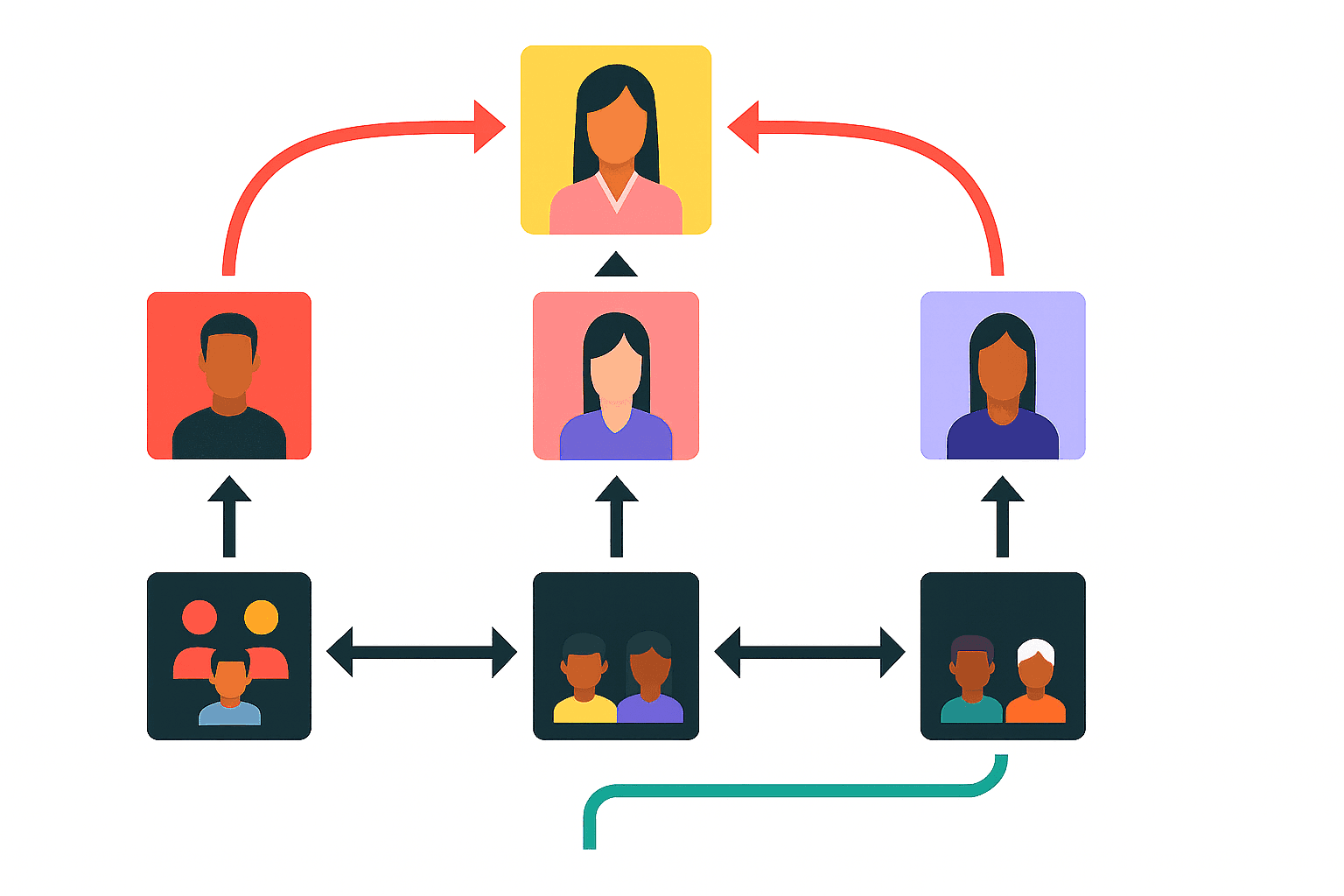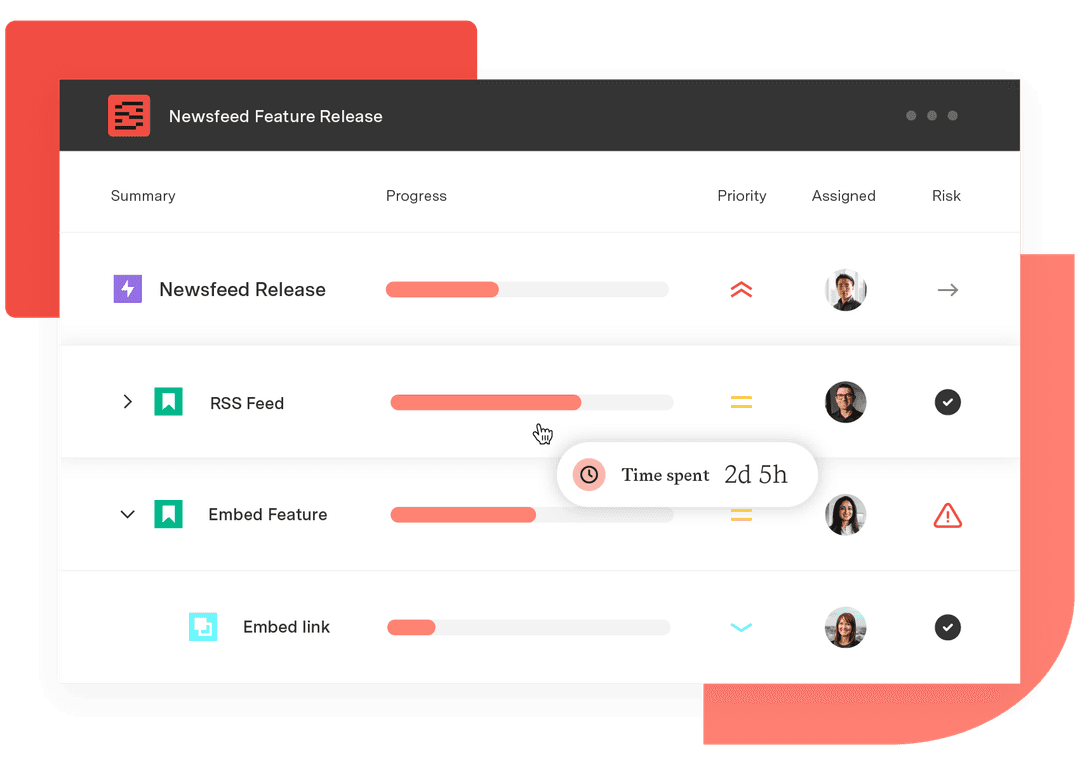Matrixed organization: Structure, pros, and cons
Tempo Team
As businesses grow more dynamic and cross-functional work becomes the norm, traditional hierarchies sometimes fall short. To stay competitive, many entities adopt a matrixed organization model – an approach that encourages flexibility, collaboration, and strategic alignment across departments. However, this matrix structure also brings complexity that teams must learn to manage.
In this guide, we’ll explore what a matrixed organization is, how it works in practice, and the key advantages and disadvantages of adopting this model. You’ll also see how Tempo’s tools, like Structure PPM and Timesheets, support the visibility and coordination that matrixed teams need to succeed.
What’s a matrixed organization?
A matrixed organization is a business structure where employees report to more than one manager. This typically includes both a functional manager (responsible for areas like marketing, finance, or engineering) and a project or product manager (responsible for a specific initiative or deliverable). The goal is to share resources efficiently across teams and align day-to-day tasks with broader strategic goals.

Unlike traditional hierarchies that follow a single chain of command, matrix structures are organized through a matrix organizational chart that shows intersecting lines of accountability. This setup allows teams to respond quickly to shifting priorities, collaborate across departments, and balance short-term project needs with long-term functional growth.
How do matrix organizations work? Examples and explanations
While matrix structures vary by organization, several characteristics are common across most implementations. These traits shape how employees collaborate and how responsibilities are managed:
Shared authority and aligned priorities: Decision-making is distributed across departments and initiatives. Managers must coordinate to ensure employees aren’t overloaded or pulled in conflicting directions. Success depends on trust, communication, and a shared understanding of outcomes.
Cross-functional communication and teamwork: In a matrix organizational structure, a product launch might include engineers, marketers, designers, and legal advisors. Each team member contributes functional expertise while working toward a common objective. Frequent communication helps avoid bottlenecks and duplicated effort.
Flexible resource deployment: Employees can shift between projects or initiatives more easily in a matrix environment. This allows companies to scale workforces up or down based on demand without restructuring the organization.
3 types of matrix management
Matrix organizations fall into three broad categories. Each model within matrix management varies based on the distribution of authority between functional and project leaders.
1. Weak matrix
In a weak matrix, the functional manager holds most of the authority. Project managers may coordinate tasks or timelines, but they rely on functional leads to assign resources and manage performance. This model resembles a traditional hierarchy with some added cross-functional collaboration.
2. Balanced matrix
A balanced matrix gives equal authority to both functional and project managers. Employees must meet the expectations of both roles, which promotes alignment between project goals and departmental standards. However, this setup requires careful communication and clear task and deadline prioritization to avoid conflicting instructions.
3. Strong matrix
In a strong matrix, project managers take the lead on priorities, performance, and scheduling. Functional managers act as resource providers and subject matter experts, but the day-to-day work is guided by project leads. This matrix structure often appears in companies that manage many concurrent initiatives.
Advantages and disadvantages of the matrix organization structure
The matrix organizational structure offers several benefits for organizations that need to remain flexible and responsive. However, it also introduces challenges that can slow progress if not properly addressed.
Advantages
Efficient use of resources across projects: Matrix structures allow managers to allocate people based on project needs, rather than hierarchical structures that often keep teams in silos. This helps avoid duplication and ensures that employees’ skills are applied where they’re needed most.
Better alignment between strategy and execution: Because employees report to both functional and project leaders, strategic goals can be embedded into everyday work. This dual focus helps bridge the gap between long-term planning and operational tasks, especially when supported by clear strategy frameworks.
More dynamic communication across teams: Employees gain visibility into different departments and develop stronger collaboration skills. This makes it easier to spot risks, share resources, and break down information silos.
Faster response to change: With flexible team structures, matrixed organizations can quickly reassign talent when priorities shift. This allows teams to adapt to market demands or internal changes without disrupting project momentum.
Broader employee development: Team members work under multiple managers, exposing them to diverse leadership styles, responsibilities, and skills. This helps build a more well-rounded workforce and supports long-term career growth.
Disadvantages
Conflicting priorities between managers: Dual reporting in a matrix management structure can lead to misaligned expectations, especially if teams lack clear methods for managing competing priorities. Employees may feel pulled in different directions if functional and project managers don’t coordinate effectively.
Role confusion and slower decision-making: Unclear responsibilities can delay progress. Teams may struggle with who has final say on decisions, which can lead to endless meetings and long bottlenecks.
Increased administrative complexity: Managing workloads, tracking time, and assigning tasks becomes more complicated in a matrix, which requires tools and habits that help teams stay organized amid competing demands.
Greater risk of employee burnout: Balancing responsibilities under two different managers can increase stress, especially when workloads compete. Employees may face conflicting deadlines or unclear performance expectations, leading to disengagement.
Manage cross-functional complexity with Tempo
Matrixed organizations succeed when teams have a clear view of priorities, performance, and capacity across the business. That requires tools that bring structure to complexity and keep everyone aligned, even across reporting lines.
Structure PPM provides portfolio-level visibility across projects, making applying consistent project prioritization practices across departments easier. Teams can group Jira issues by project, product, or team function and create a real-time hierarchy that reflects organizational goals.
Timesheets helps teams manage workloads across functional and project lines. By tracking time at the issue level, employees and managers can see how effort is distributed, identify overload risks, and align work with expectations. Approval workflows and reporting tools reduce administrative friction and improve accountability.
Together, these solutions help matrix leadership stay aligned on goals and deliverables without micromanaging or duplicating effort. Whether your matrix is weak, balanced, or strong, Tempo brings clarity to complex environments.












































